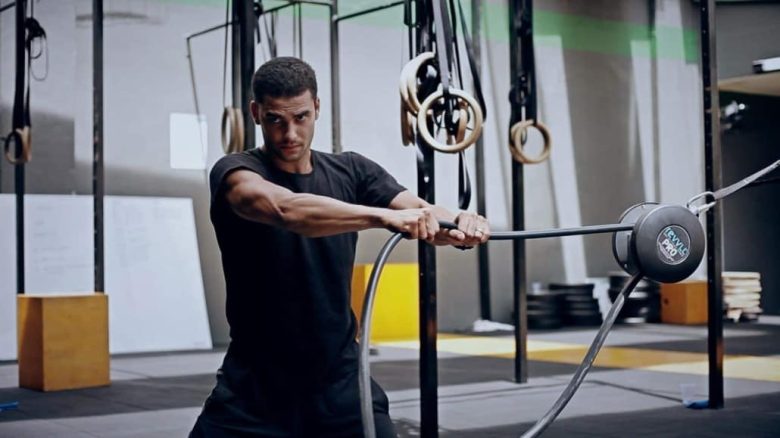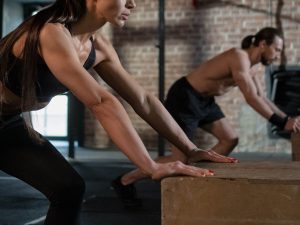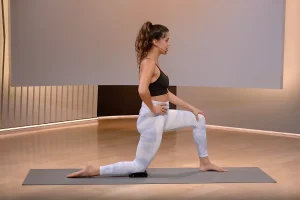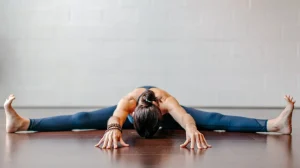Functional training is designed to simulate various activities encountered in daily life. Unlike traditional training, which trains only one muscle group at a time, functional training works multiple muscle groups simultaneously, improving strength, coordination, and balance. This type of training improves overall body function, making daily activities easier and reducing the risk of injury. Functional training helps the body better handle daily activities such as carrying food and climbing stairs. It also improves posture and stability. Functional training is an important part of a comprehensive fitness plan and contributes to improved physical function and overall health.
Improving Stability and Core Strength for Daily Activities
The foundation of functional training is enhancing core stability and strength. The abdominals, obliques, and lower back muscles are all core muscle groups, vital to sustaining balance and stability. Planks, bridges, and rotational movements are effective ways to strengthen the core. This process provides better support for the spine and improves posture. Stable core muscles make daily activities easier, reduce the risk of lower back pain, and prevent injuries from quick movements or lifting heavy objects. Integrating core-focused exercises into functional training is beneficial for both beginners and experienced athletes.
A Perfect Blend of Strength and Flexibility
Functional training improves speed of movement by combining strength and flexibility. Strength training exercises like squats, lunges, and push-ups help you train the muscles needed for lifting and pulling. Stretching exercises help joints move more smoothly. The more flexible your muscles and joints are, the lower the risk of injuries or sprains. This is because your movements become more natural and fluid. Functional training strengthens the body’s ability to perform daily activities safely and efficiently by balancing strength and flexibility, which ensures long-term functional health.
Using Balance and Coordination in Functional Movements
One of the main goals of functional training is to improve balance and agility. Many functional exercises involve unilateral movements—that is, movements on one side of the body. These movements test your stability and neuromuscular control. Exercises like single-leg squats, step exercises, and stability ball training, which work similarly to activities of daily living, help improve balance and coordination. Improved balance reduces the risk of falls and injuries, especially in older adults. It also increases your confidence in your daily activities.
Improve your Cardiovascular functions and endurance.
Functional training typically involves dynamic movements that increase heart rate, improve endurance, and enhance cardiovascular function. Movements such as medicine ball throwing, kettlebell swings, and circuit training can enhance strength and speed. Maintaining your energy levels throughout the day, such as long walks, carrying children, or housework, becomes easier with improved endurance. Functional training also improves oxygen delivery to your muscles, which helps the body use energy more efficiently and keeps your heart healthy.
Small Equipment, Significant Results
Even if you have little or no equipment, functional training can be very beneficial. Using resistance bands, dumbbells, kettlebells, and bodyweight exercises, you can perform various functional movements that train multiple muscle groups. Everyday movements like weightlifting and pushing/pulling can be simulated with simple equipment, effectively increasing strength. Functional training can be done at home with minimal equipment, so people don’t need to visit a fully equipped gym to maintain a consistent workout routine. This feature ensures the practical applicability, safety, and integration of the training in daily life.
Creating a Consistent Routine for Functional Fitness
To maximise the benefits of functional training, consistency is essential. Regular training, ideally two to four times a week, allows your body to gradually adapt to these beneficial movements, over time improving strength, balance, and endurance. Alternating between upper body, lower body, and core training helps prevent overuse injuries and promotes overall health. Regular training not only creates a healthier body but also promotes self-discipline, which helps you maintain your health in the long term.
How to Integrate Functional Training into Your Daily Life
Integrating functional training into your daily life is the best way to achieve the desired results. Simple daily activities, such as brushing your teeth while standing on one leg, doing squats while doing housework, or correctly lifting heavy objects in the supermarket, can help you remember the key points of the training movements. Applying functional training in real life strengthens the body and enhances its ability to tackle daily challenges. This effective application can positively increase muscle strength, which in turn increases self-confidence and makes daily activities easier.
Recovery, Nutrition, and Overall Health
Recovery and a good diet are essential components of physical training. After exercise, muscles need time to repair and adapt, making them stronger and more durable. Adequate sleep, adequate hydration, and a balanced diet—rich in protein, healthy fats, and complex carbohydrates—help you recover and increase your energy. Integrating mindfulness exercises like yoga, stretching, and foam rolling into functional training helps prevent sports injuries and improve overall health. Exercise, recovery, and a nutritious diet work together to maintain functional fitness and enhance daily performance.
Conclusion
Functional training is a practical and effective way to improve strength, flexibility, balance, and endurance. These are essential skills for performing daily tasks effectively. Functional training prepares the body for real work by focusing on movements similar to those we encounter in our daily lives. The key to long-term success lies in consistency, proper form, the use of equipment, and a focus on nutrition and recovery. Whether you do it at home or at the gym, functional training improves your quality of life, boosts self-confidence, and helps your body become healthier and stronger, better equipped to withstand the challenges of everyday life.
FAQs
1. What is functional training?
Functional training focuses on improving strength, balance, flexibility, and coordination, better preparing you for everyday life. It uses training methods based on real-life movements.
2. Do I need to go to the gym for fitness training?
No, you can do functional training at home using just your body weight, resistance bands, or simple equipment like kettlebells and dumbbells.
3. How often should I do functional training?
It’s recommended to train two to four times a week, with rest days to allow your muscles to recover and adapt.
4. Can functional training help prevent sports injuries?
Yes, functional training can improve your balance, coordination, and strength, reducing the risk of injuries in everyday life.
5. Can fitness beginners do functional training?
Absolutely. Beginners can start with simple movements and gradually increase the difficulty as their coordination and strength improve.
6. How does functional training make you feel more energetic?
Functional training improves energy and endurance during daily activities by strengthening multiple muscle groups, improving cardiovascular function, and increasing movement efficiency.




